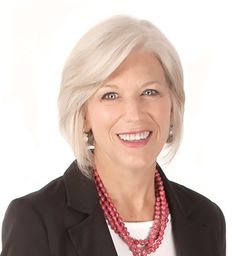Editor’s Message
Cynthia Ackrill, MD, PCC, FAIS
Editor
As always, it is with great pleasure that we bring you another issue of Contentment, packed full of science, wisdom, and advice from our colleagues. This issue is dedicated to helping you move forward in a world full of challenge with a special focus on the power of movement itself to combat stress. We are wired to move in response to threat. E-motions are designed to put us in motion toward safety. We are also wired to learn through movement. Movement is critical to maximizing our brainpower and overall wellbeing.
And yet…we often find it hard to fit enough movement into our over-busy days…or we just can’t seem to get started or stick with an official exercise program. Let this issue help you move beyond the should’s and guilt to get creative in thinking about how to include more movement with less struggle. As you read, note ideas that inspire you or make the challenge less daunting and more enjoyable.
We start with another deep dive into the science underlying stress an article from Lewis Coleman, MD, FAIS on carbon dioxide. Why CO2? Because it turns out that we have been operating under some huge misunderstandings about the role of CO2 in our health. With the perspective and wisdom of an anesthesiologist and researcher, Dr. Coleman cites long-ignored studies that could help us harness the power of CO2 to reverse the ravages of stress and disease and even lead to new therapies. This is a great example of how modern medicine, even with good intentions, can get off-track and miss opportunities.
The next articles focus on the role of movement in our brain health and overall well-being. In a sedentary society, glued to our technology, we just don’t naturally move as much. Evian Gordon MD, PhD, FAIS; Pat Dunn PhD, MS, MBA, FAHA; and Jennifer Franklin discuss harnessing the synergistic effects of exercise on stress resilience. They address the inspiring benefits, the underlying mechanisms, and offer pragmatic ideas for making new movement habits stick.
Jeff Jernigan, PhD, BCCPC, FAIS shares a personal story about “movement as salvation” when faced with the limitations of disabilities. He discusses the resistance we all experience to changing our habits and how to shift from being slaves to urgency or rationalizing work over self-care to healthier mindsets and practical ways to build in more movement.
Frank Forencich, DAIS helps us move beyond the often-intimidating concept of chunks of intense exercise to the very palatable idea of “movement snacks,” taking advantage of mini-moments of activity throughout our busy days. He offers guiding principles to help with the mind-shift and realistic ideas for the micro-breaks that will fuel brainpower and well-being.
Ashley DePaulis addresses the challenge of how to fit more movement into our lives by including more playfulness in how we think about the challenge. Adding play, light, fun, and creativity to our thoughts opens the mind to more positivity and creative possibilities. She discusses the power of intrinsic vs. extrinsic motivation, the former being far stronger in helping you start and continue any healthy habit. She challenges you to examine your underlying attitudes that drive your behavior, offering ways to shift your mindset to support your success, and build effective recesses into your busy day.
Next, we welcome an article from a new contributor, Laura Putnam, author of Workplace Wellness that Works on the power of infusing movement into the workplace. This is critical since we spend more time at work than most other activities, and we are missing the enormous potential of movement to increase brainpower, creativity, and well-being. She discusses the role of leadership in tapping into this potential and offers practical ideas for everyone.
And finally, a few thoughts from me, the wellness doc who didn’t want to exercise. It’s my personal perspective on the frustrating disconnect between knowing something is good for you and actually doing it. We have so many stories in our heads that can sabotage our best intentions and efforts. I offer a few ways to move beyond those and get creative with our relationship with movement and make choices that will recharge mind, body, and spirit.
Thank you for being part of the tribe determined to understand and apply tools that will make a difference in the wellbeing of all!
Cindi
